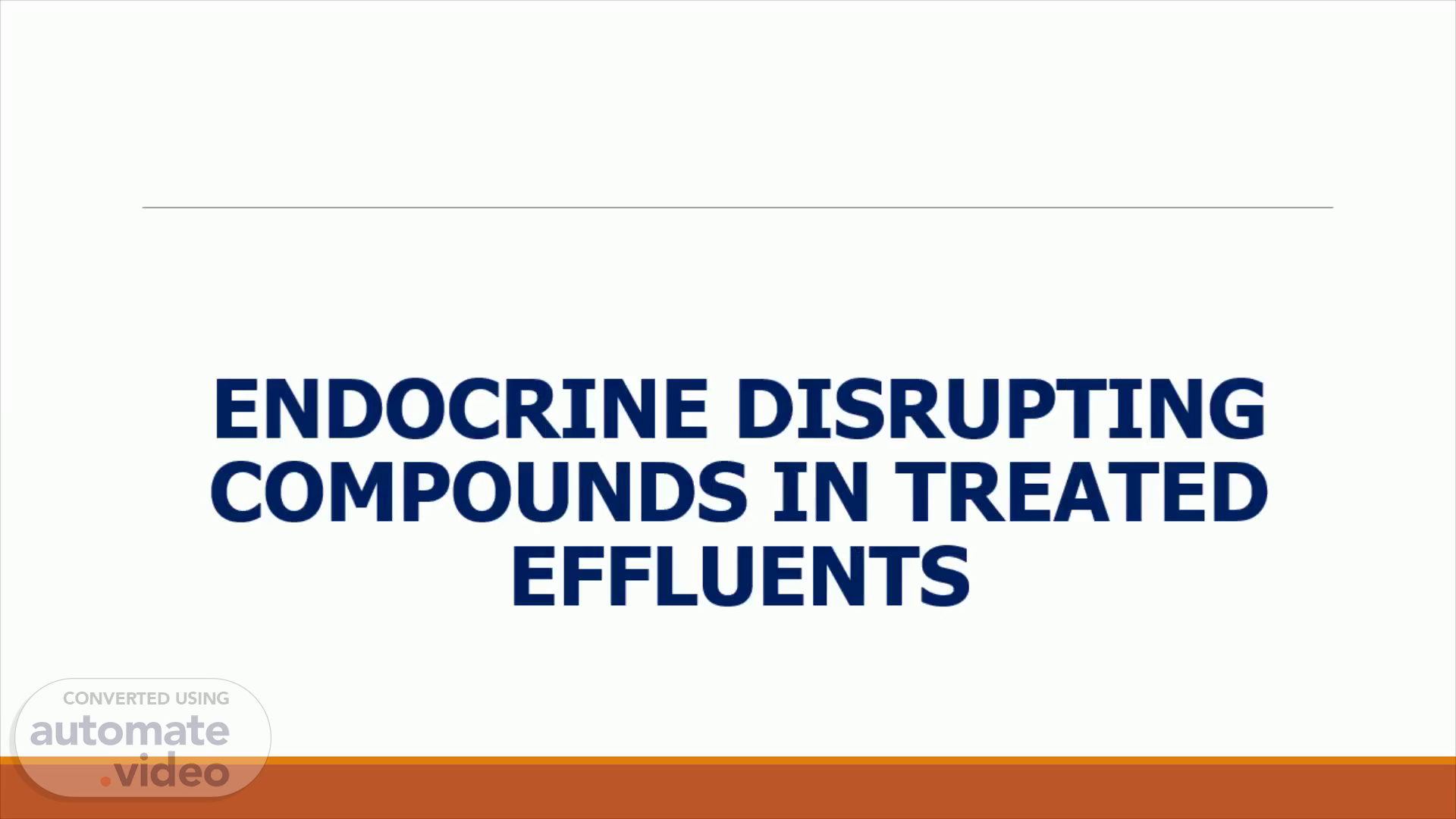
ENDOCRINE DISRUPTING COMPOUNDS IN TREATED EFFLUENTS
Scene 1 (0s)
ENDOCRINE DISRUPTING COMPOUNDS IN TREATED EFFLUENTS.
Scene 2 (6s)
WHAT IS ENDOCRINE SYSTEM ?. The endocrine system is a chemical messenger system in our body, it produces hormones These are released by internal glands of an organism directly into the circulatory system, regulating distant target organs In vertebrates, the hypothalamus is the neural control center for all endocrine systems..
Scene 3 (21s)
ENDOCRINE DISRUPTING COMPOUNDS. EDCs are chemicals or mixtures of chemicals that interfere with the body’s hormones work Some EDCs act like "hormone mimics" and trick our body into thinking that they are hormones, while other EDCs block natural hormones from doing their job. EDCs can increase or decrease the levels of hormones in our blood by affecting how they are made, broken down, or stored in our body. Overall it affect negatively on all living organisms..
Scene 4 (43s)
Municipal wastewater contains natural and synthetic organic chemicals Some natural and synthetic organic compounds are commonly found in treated wastewater that have been shown to induce endocrine disrupting effects.
Scene 5 (54s)
The Endocrine Disrupting Compounds (EDCs) include natural hormones such as natural estrogens , e.g. 17 β- estradiol (E2) and estrone (E1) from Urinary excretion Synthetic compounds used in medicine as contraceptives and in some hormonal therapies, e.g., 17 α- ethinylestradiol (EE2).
Scene 6 (1m 9s)
Chemical used to make epoxy resins, polycarbonate plastics, flame retardants and dental sealants, i.e., bisphenol A (BPA); degradation products of non-ionic surfactants, e.g., nonylphenol (NP).
Scene 7 (1m 22s)
Effluents from sewage treatments plants (STPs) discharged into water bodies such as rivers contains estrogenic contaminants at the levels sufficient to induce negative influence to living organisms EDCs could bring vitellogenin biosynthesis in male fish, birds, reptiles and mammals in polluted areas It also undergo alterations of endocrine reproductive systems, decreased fertility and growth, poor hatching/eggshell thinning and abnormal thyroid function in aquatic life.
Scene 8 (1m 41s)
EDCs effect on humans include malformations of newborns, undescended testicles, abnormal sperm, low sperm counts, abnormal thyroid function, female breast cancer, male testicular prostate cancer and other effects.
Scene 9 (1m 54s)
Thank you very much.